I hate the projects. They are where we place the poor so we don’t have to look at them. They are a symbol of how easy it is for us to ignore some of the most vulnerable in our society.
The day we landed in Hong Kong the news was filled with discussions about the anniversary of Grenfell. As we passed the many towers on the way from the airport to our hotel, I wondered what kind of safety measures were in place in these towers. I hoped the people of Hong Kong would never have to face the reality of Grenfell.
As our taxi sped past tower after tower, I could see glimpses into the buildings. I wondered what their lives were like, what stories they have to tell. Are they okay with living in overcrowded buildings? Did they want something more. Lights from their windows revealed little – a table, plants, a person walking around. I can only hope the people inside are doing well. As a tourist I will never know.
Thursday, June 14, began with a smack to the face of humidity. It’s one thing to know there is humidity and another to experience it to such a degree that you’ve never felt before.
Before walking up the hill to the Hong Kong Zoological and Botanical Gardens, Paul and I had to make a stop at The Hong Kong and Shanghai Banking Corporation, the largest bank in Hong Kong. It was established in 1865 in British Hong Kong as The Hong Kong and Shanghai Bank. HSBC is one of the largest banks in the world.
We walked over to the lions out front of the bank and took some pictures. The results of humidity were evident on Paul’s shirt even though we had only been walking for about ten minutes.
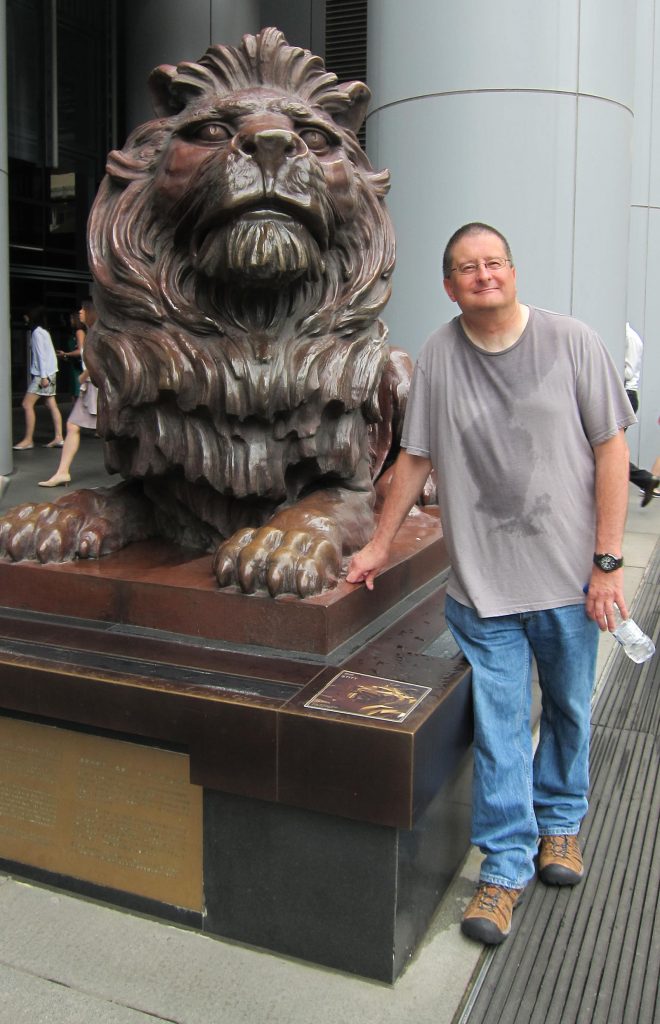
HSBC’s first lions – cast in bronze from models prepared by Henry Poole in England – were installed outside the bank’s office in Shanghai in 1923. Their nicknames, Stephen (shown here) and Stitt come from A.G. Stephen, the bank’s chief manager from 1920-1924, who commissioned them and the manager in Shanghai at the time, G.H. Stitt.
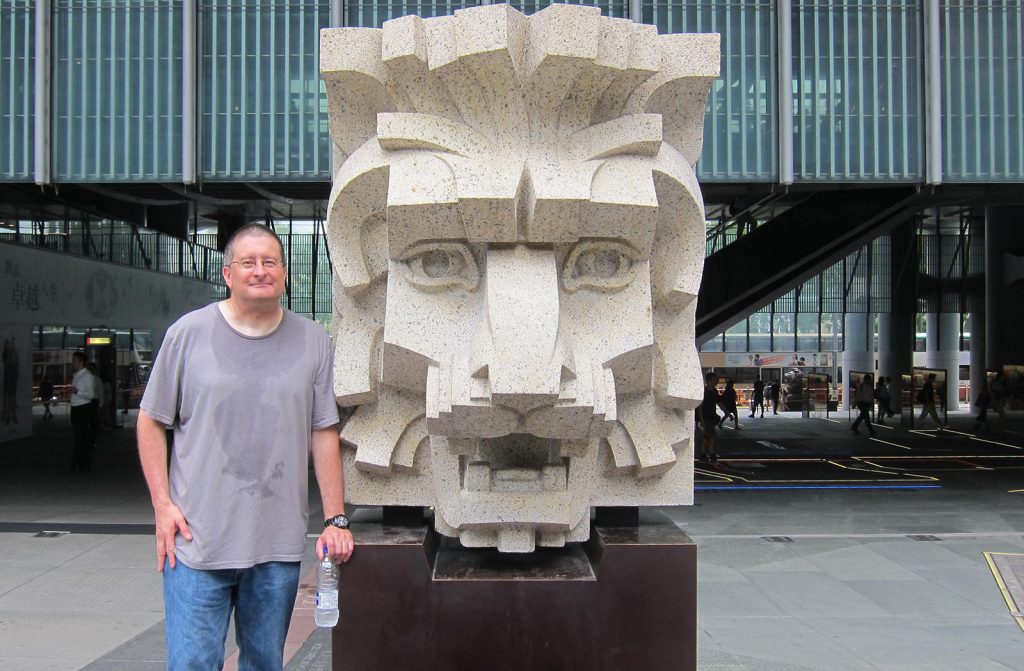
HSBC has been located at 1 Queens Road Central since 1865. The open-air heritage space behind Paul and the lion show how the area looked in 1910 with the historic street pattern on the ground. It shows the forgotten roads and that the seashore once ran along this spot. Four iterations of the bank have stood here. The third, completed in 1935 included two massive lion heads that watched over Hong Kong from the building’s 12-storey tower until 1981. They now welcome visitors at this entryway.
We took advantage of the large escalator that led up into the bank and into air conditioning. I took a picture from the top and rested a moment before we headed back into the heat and up the hill to the Hong Kong Zoological and Botanical Gardens. The route was clearly marked and easy to get to. It was, indeed, uphill all the way.

There are a few more stairs to climb before you reach the archway, which was erected in memory of the Chinese who died loyal to the Allied cause in the wars of 1914-1918 and 1939-1945.
Finally, we made it to the Hong Kong Zoological and Botanical Gardens. Along with species of plants, there are many species of monkeys as well as an aviary. I don’t have the access like I do at Riverside Discovery Center in Scottsbluff, but more than a year of asking director Anthony Mason questions has yielded valuable information in knowing how animals in your care should be treated and what to look out for if they are not.
Using what I’ve learned, I saw work crews making sure things were running smoothly. Near the orangutans, a group of five employees were discussing something. I don’t speak Cantonese but you could tell by their hand movements, there was an issue. Once they settled on a solution, they got to work. We didn’t have time to stay and see exactly what their solution was, but I’ve seen the same behavior from zoo staff back home.
The Hong Kong Zoological and Botanical Gardens was founded in 1864 and opened to the public in 1871, making it one of the oldest zoological and botanical centers in the world and the oldest in Hong Kong. It is on the northern slope of Victoria Peak. From the MTR station, it is a 20 minute walk uphill. Since it is on the slope, you walk a bit more uphill once on the grounds.
There are eight gardens – bamboo, camellia, magnolia, greenhouse, palm, bauhinia, azalea, and herb – that you can walk through. The animals consist of mammals, reptiles and birds.
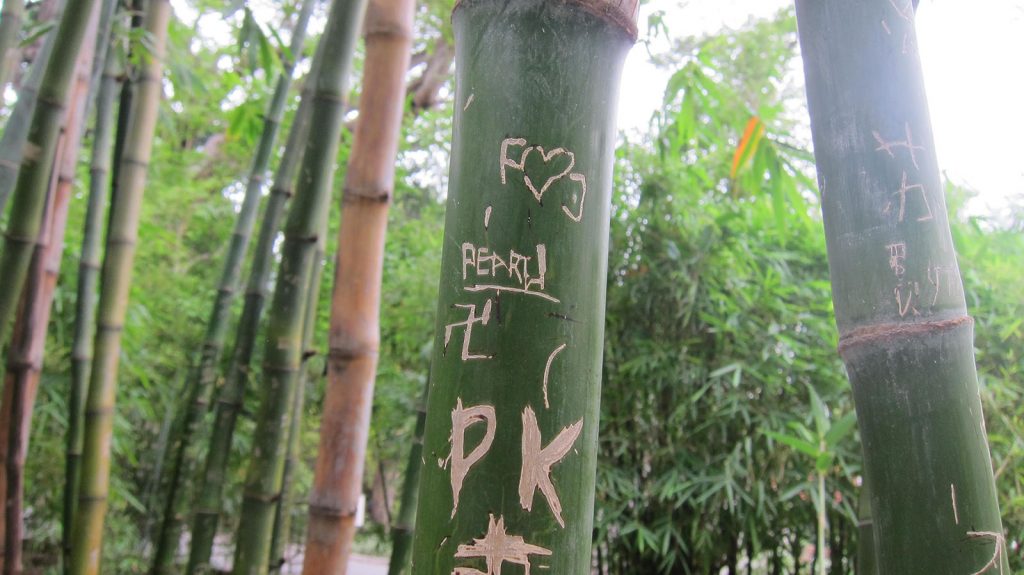
Only assholes scratch on trees in the bamboo garden at the Hong Kong Zoological and Botanical Gardens.
One of the neat things I noticed for visitors when we were looking at the animals was the large sections of plexiglass for those who wish to take photographs. If you’ve been to the zoo in Scottsbluff, the sections were about one-fourth the size of the one where you can see Apollo the lion.
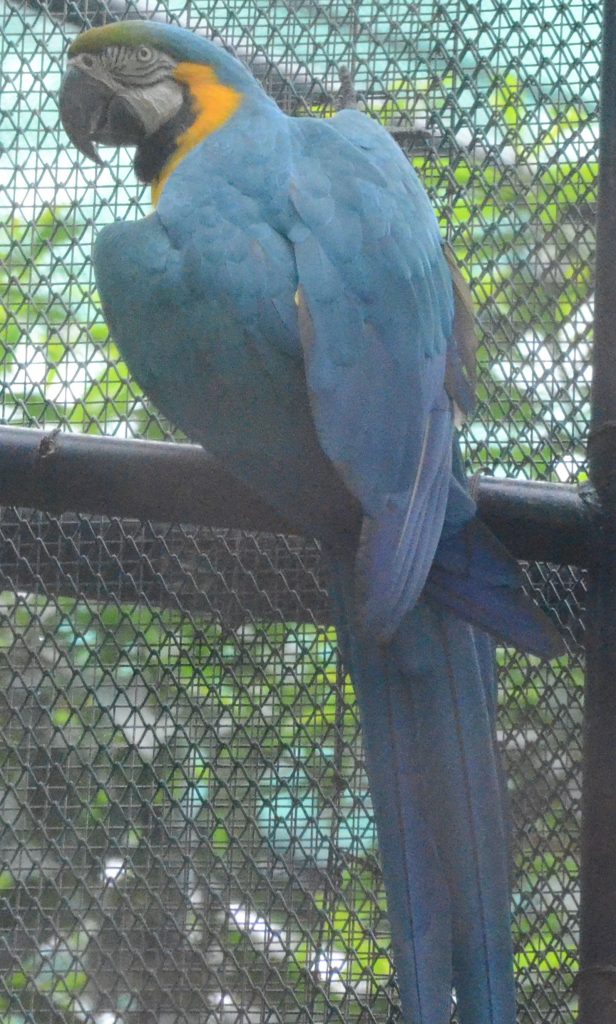
This is not Otis, who lives at Riverside Discovery Center in Scottbluff, but another blue and yellow macaw that lives at the Hong Kong Zoological and Botanical Gardens.
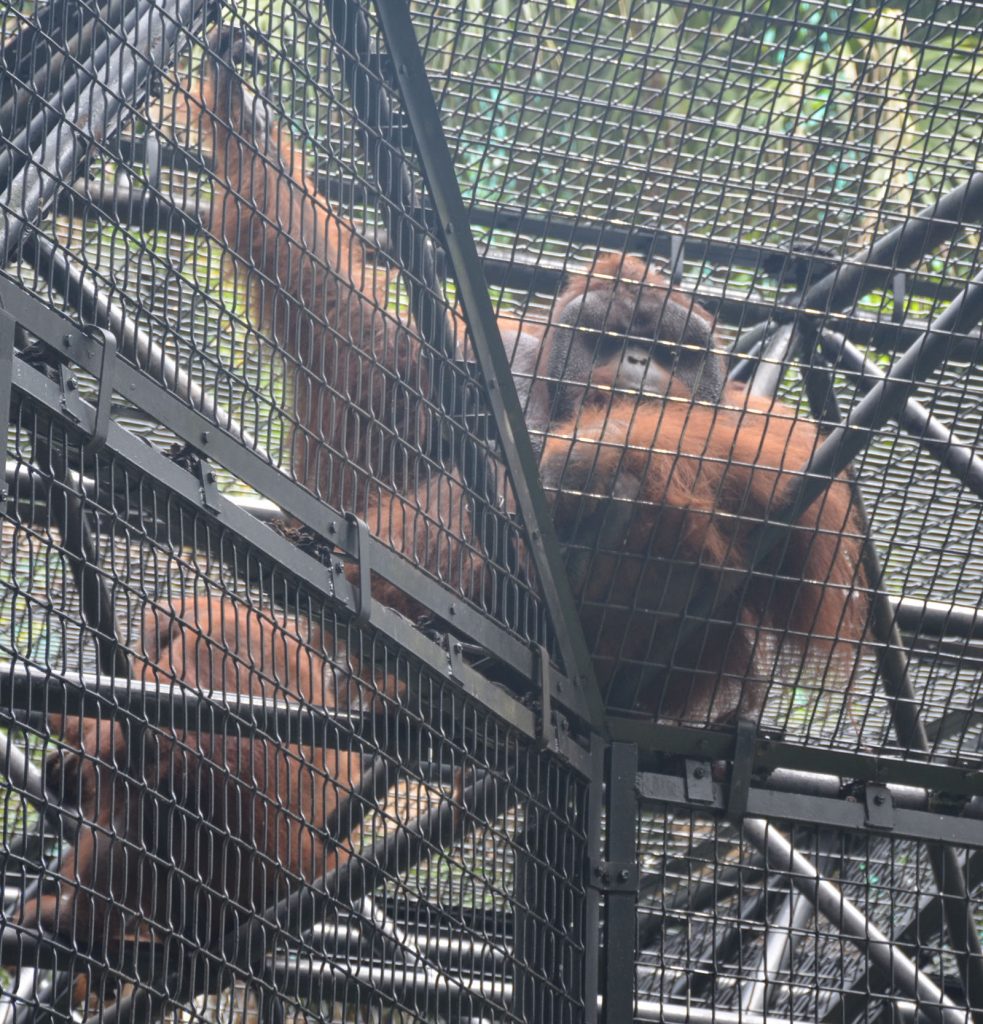
Try as I might, I could not get a clear picture of this Bornean Organgutan at the Hong Kong Zoological and Botanical Gardens, so I had a staring contest instead. I won. The orangutan eventually looked at some guy passing by.
I could have stayed and watched the animals all day if the humidity wasn’t so bad. Thirty minutes off the train and we were soaked with sweat. We stayed for about an hour, taking pictures and learning about the animals that aren’t available at our zoo back home.
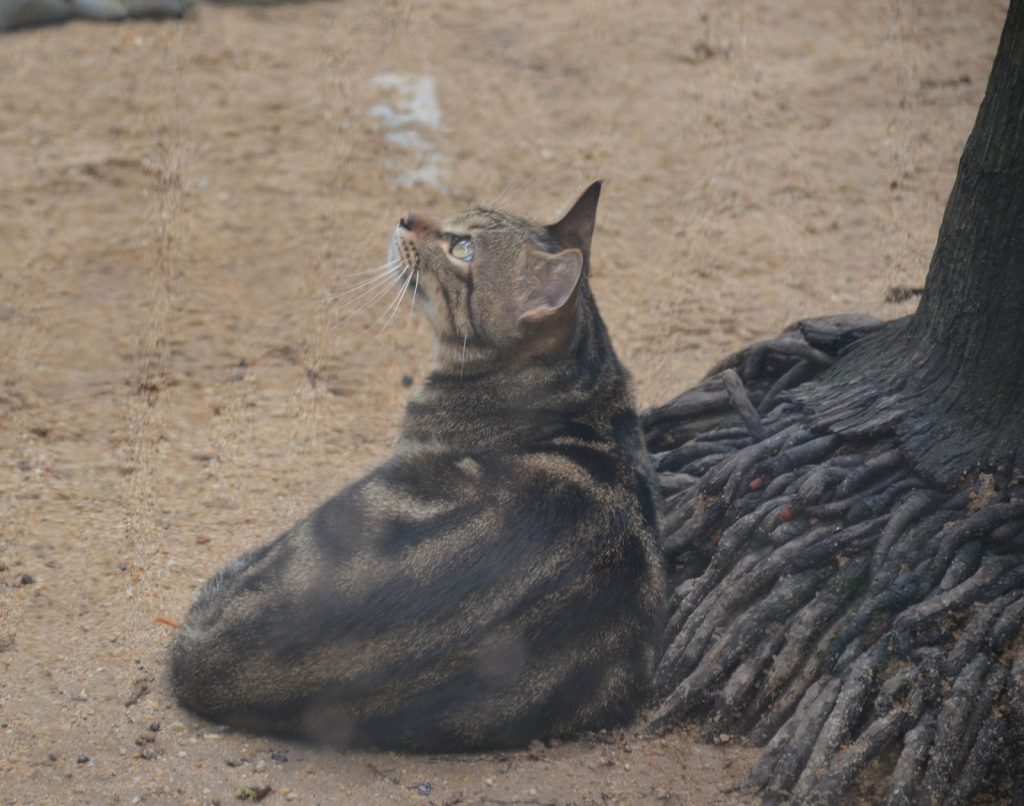
I don’t know what the cat was looking at. He was inside the tortoise enclosure at the Hong Kong Zoological and Botanical Gardens. No, I don’t have photos of the tortoises. The cat was prettier and far more interesting. Although the tortoises moved a lot faster than I thought they would.
Paul and I made comments about the enclosures, how they were made, how we thought the animals’ well-being were taken into consideration and if they seemed to be happy there. The animals I identified without looking at the information stands are all ones that would naturally do well in this climate.
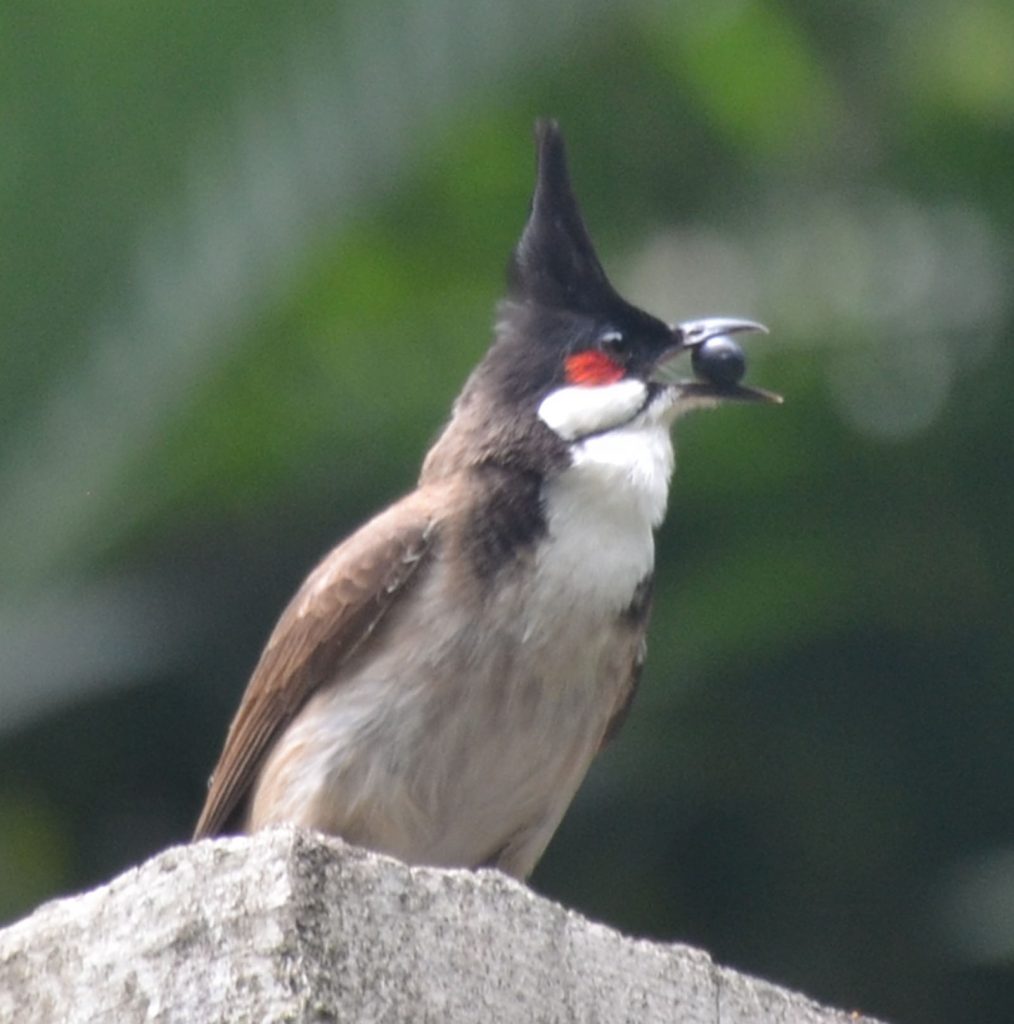
I am not sure what kind of bird this is, but it was flying around the Hong Kong Zoological and Botanical Gardens.
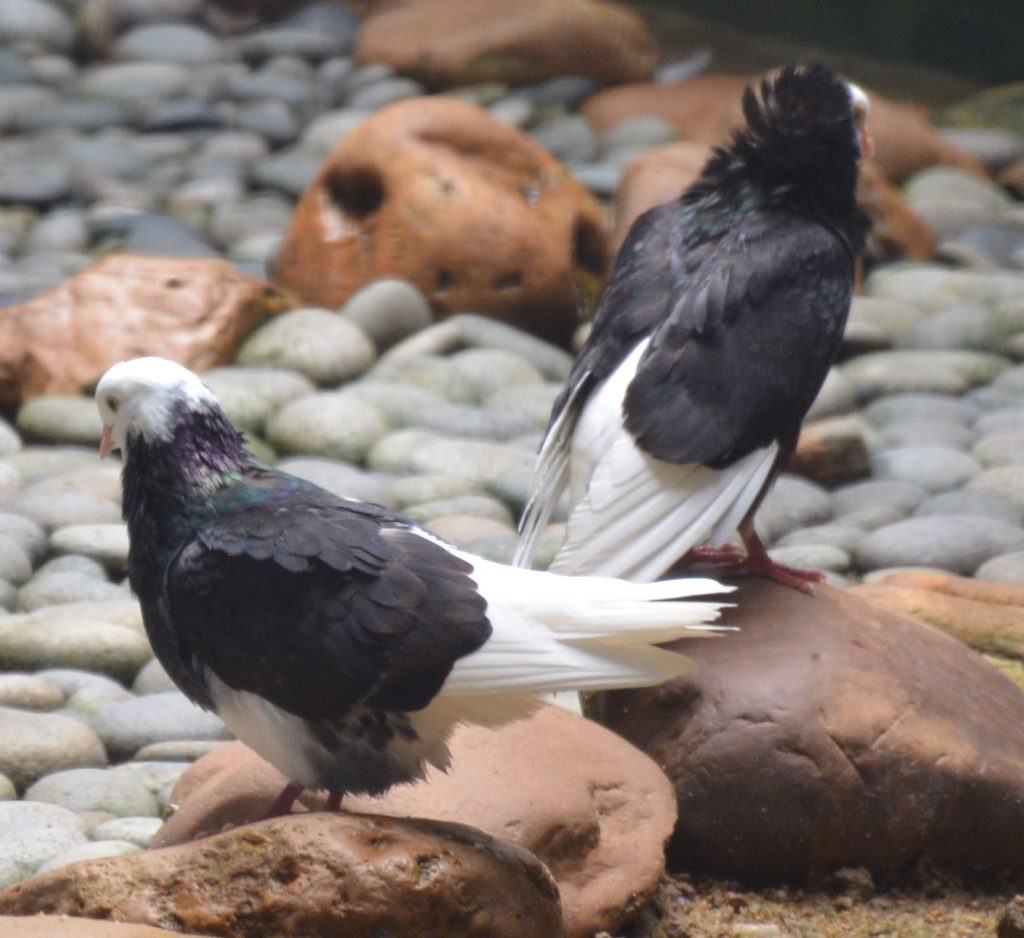
The Hong Kong Zoological and Botanical Gardens identified this as an old German owl-black bar shield bird. I call it a pigeon.
We skipped the meerkats because they’re meerkats. Years of watching stupid British meerkat commercials makes me not want to see them. We stopped at a shop to purchase two large, cold bottled waters, which we promptly drank.
Before leaving, I took a few interesting photographs of homo sapiens who were also visiting.
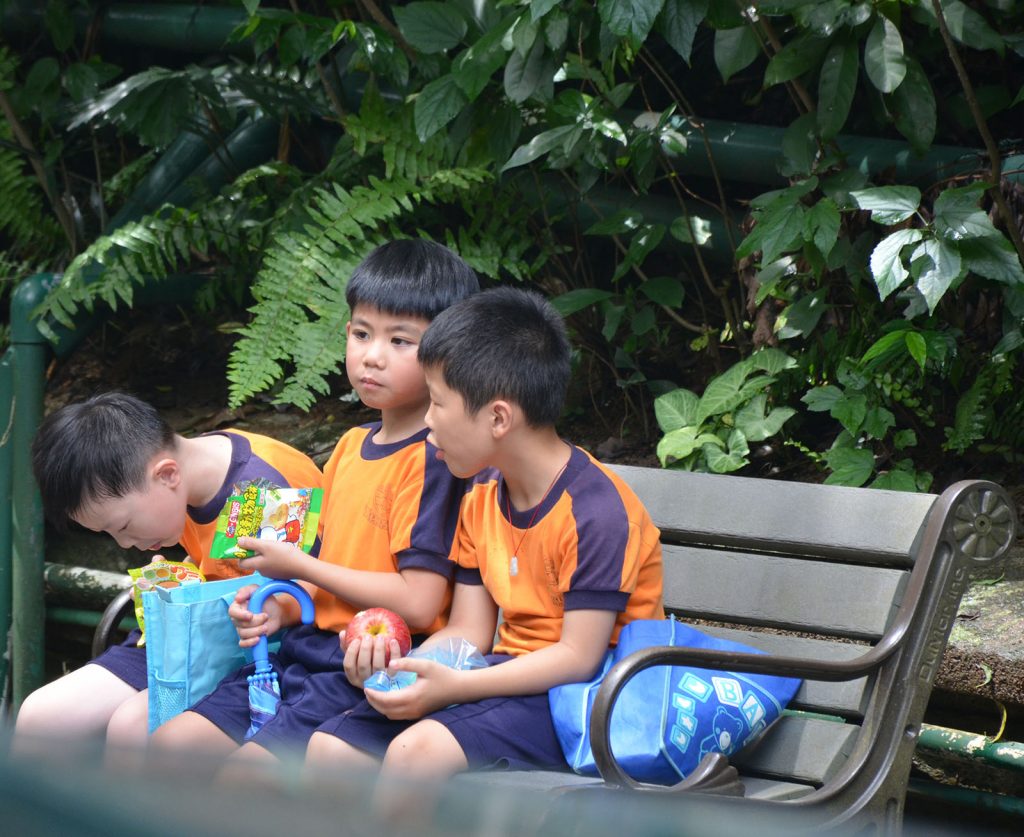
I grabbed a quick shot of these boys eating lunch at the Hong Kong Zoological and Botanical Gardens.
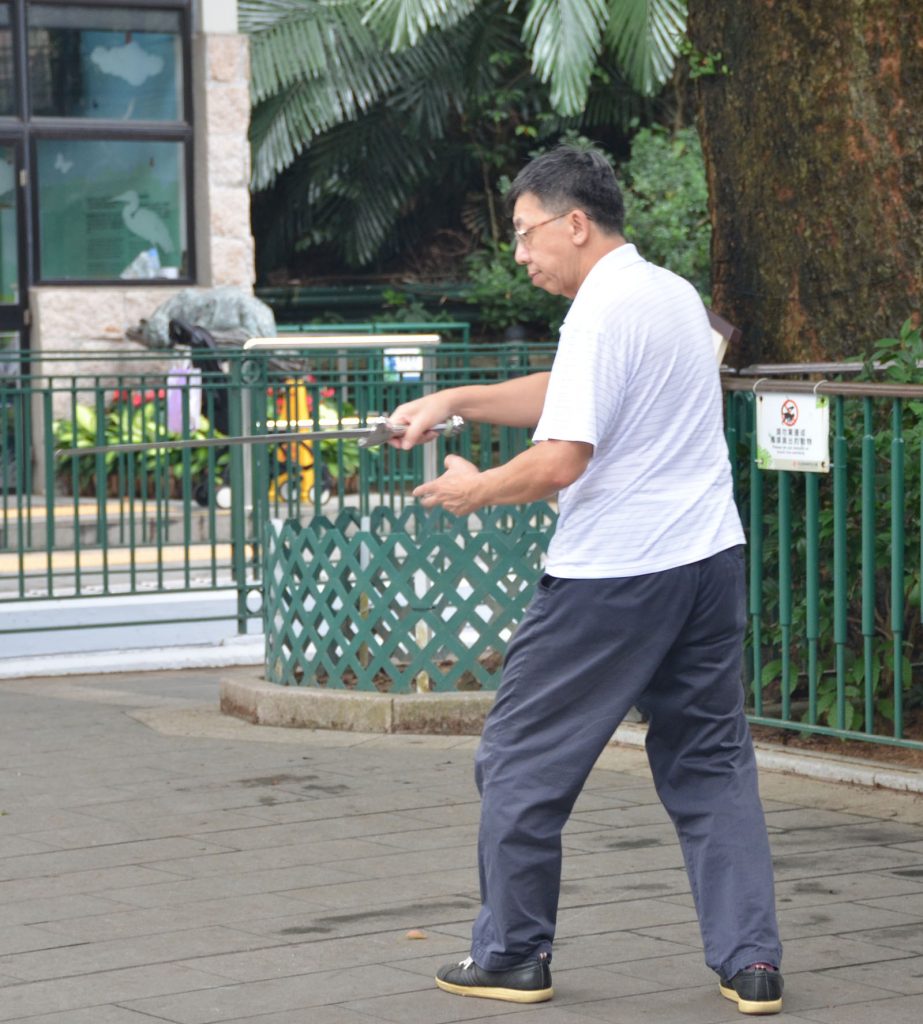
This guy was practicing with a sword. I didn’t want to ask him exactly what because I didn’t want to get stabbed.
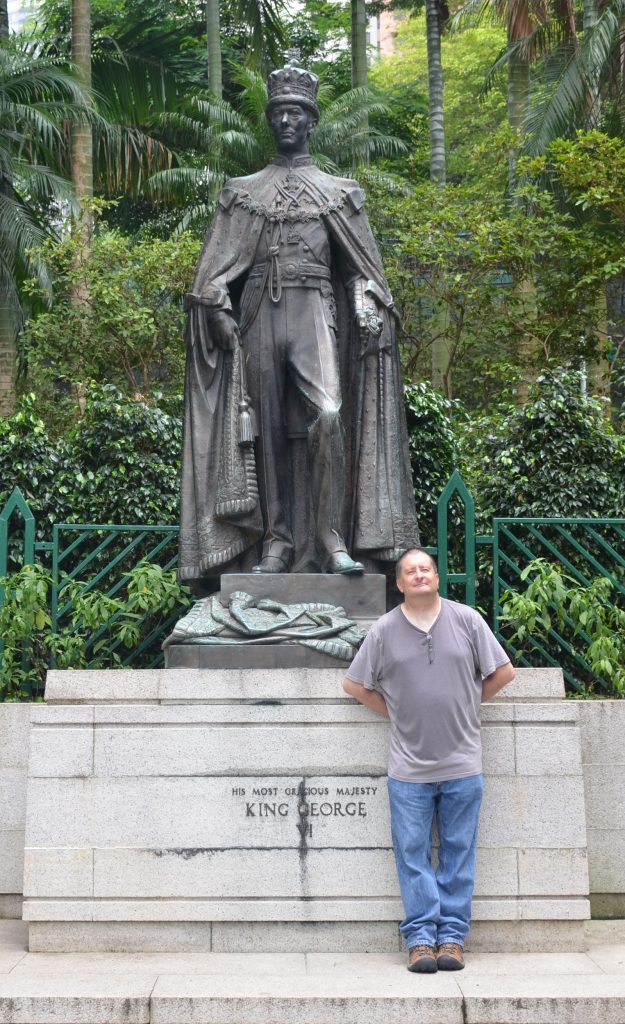
The bronze statue, by British sculptorGilbert Ledward, was erected in 1958 in commemoration of Hong Kong’s 100th anniversary (1841-1941). A statue of Sir Arthur Kennedy, the seventh governor of Hong Kong (1872-1877), once stood on the same spot. It was shipped to Japan and melted during the Japanese occupation of Hong Kong (1941-1945).
Walking back down the hill was a quicker journey. We stopped in the Leppo centre to enjoy some air conditioning before heading back to the train station. Our next stop, the old clock tower.
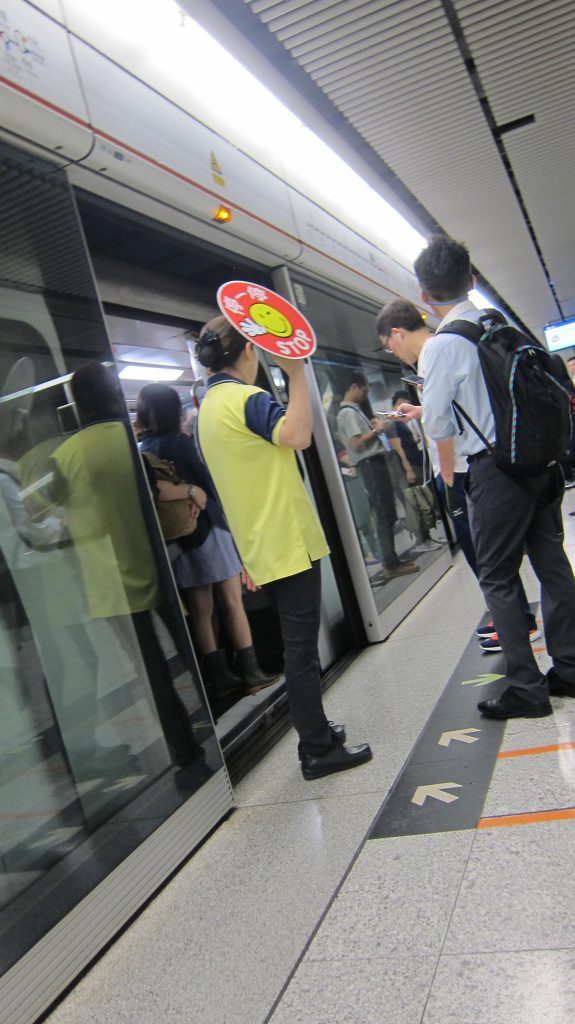
There is an orderly system to getting on and off the train in Hong Kong. It would be nice if everyone around the world followed this model.
Catching a train on the subway is an orderly affair. Everyone queues in a neat line, to the left and right of the opening train doors. People wait patiently as everyone gets off before they get on. When it’s obvious the car is full, an employee steps in with a sign that says “STOP” and you wait for the next train. This is a far cry from New York, London, and Paris where everyone thinks, “Surely there’s room for me.”

The subway system is not difficult to figure out. Once we purchased our Octopus card, everything else was easy. The subway even has signs of which exits to take that are color-coded so you can find the attraction or location above ground.
From the train station, it’s about a 15 minute walk to the southern shore of Tsim Sha Tsui, Kowloon where the clock tower resides. It is the only remnant of the original site of the former Kowloon Station on the Kowloon-Canton Railway.
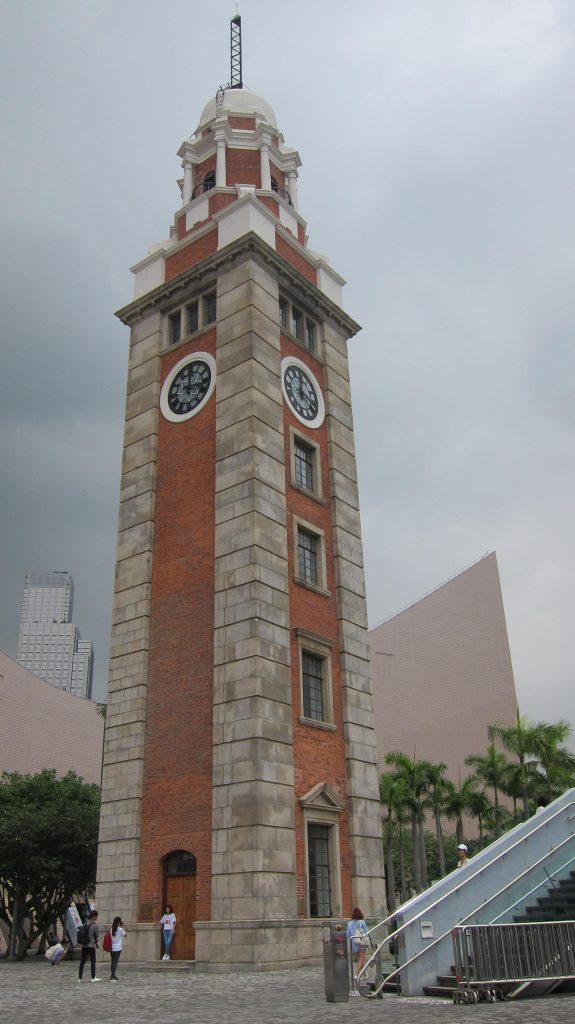
The former Kowloon-Canton Railway Clock Tower was built with red bricks and granit in Edwardian Classical Revival style. It is 44 meters high with a 7 meter long lightning rod. The upper part of the tower is an octagonal domed turret built of red brickwork which contrasts with white painted classical features of scrolled-shaped buttresses, columns, and cornices.
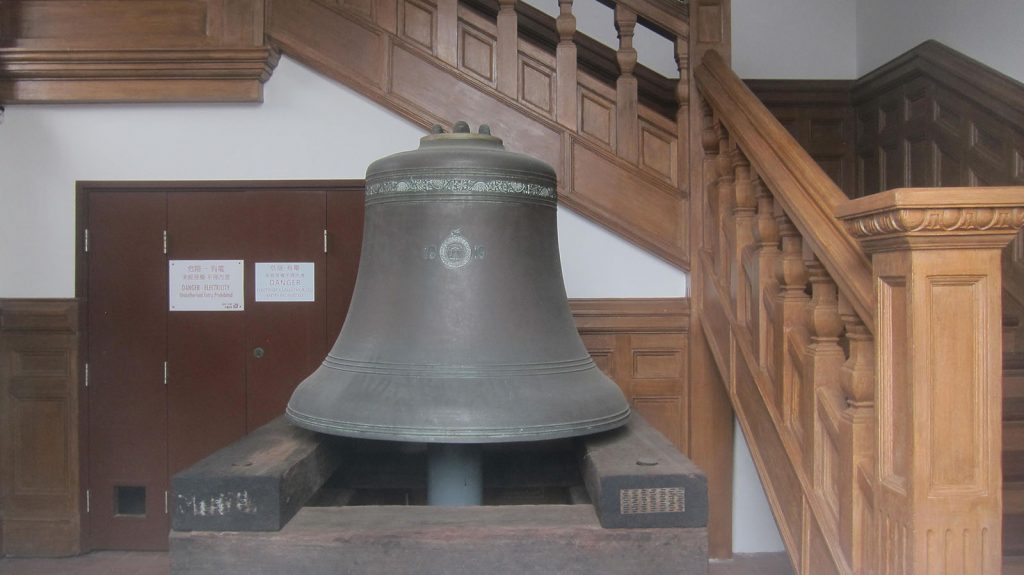
This bell was cast in 1919 by the Taylor bellfounding family in Loughborough. It weigh one ton and was part of the electric clock mechanism in the clock tower. It was donated to the Hong Kong government in 2010 to celebrate the 100th anniversary of the commencement of train services in Hong Kong. The bell began ringing in March 1921 and ceased to function during the Japanese occupation of Hong Kong between 1941 and 1945. It was then used until 1950. In 1976, the bell was removed from the tower and put on public display in several places before being donated. The bell’s platform is made of wooden railway sleepers, which were used to support the railway track before the introduction of concrete sleepers.
The tower is made from red brick and granite. It is forty-four meters tall with a seven-meter lightning rod on top. It is closed for maintenance right now, but there is a wooden staircase inside that can be climbed to the top.
The tower is near Victoria Harbour and the Tsim Sha Tsui Ferry Pier, which we also walked by. We took a leisurely stroll along the promenade here, past shops and other people enjoying the afternoon. We stopped occasionally to take photos of Hong Kong Island and its skyline.
From the promenade, we could walk back to our hotel. No need for a train. We stopped in a few shops along the way, partly to escape the humidity and partly to check out what they had. I counted three Rolex stores, but I already have a watch.
As we walked along Paul said something I was thinking, but hadn’t quite thought it out yet. Hong Kong seems somewhat familiar and I couldn’t put my finger on it.
“I feel like we’re walking around in Blade Runner,” Paul said.
Except for the fact that it is brighter here than in Blade Runner where it was always dark and raining, that’s what it feels like here.
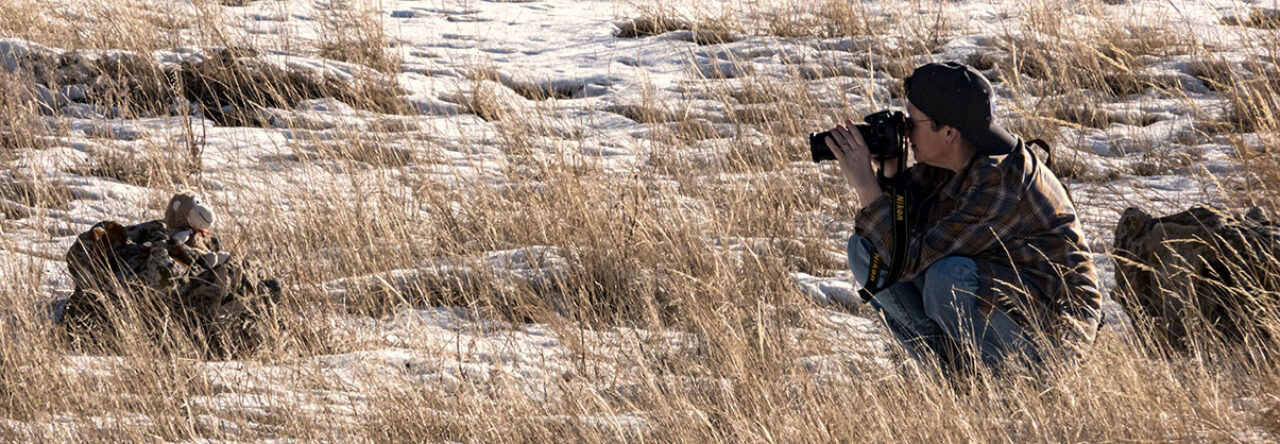
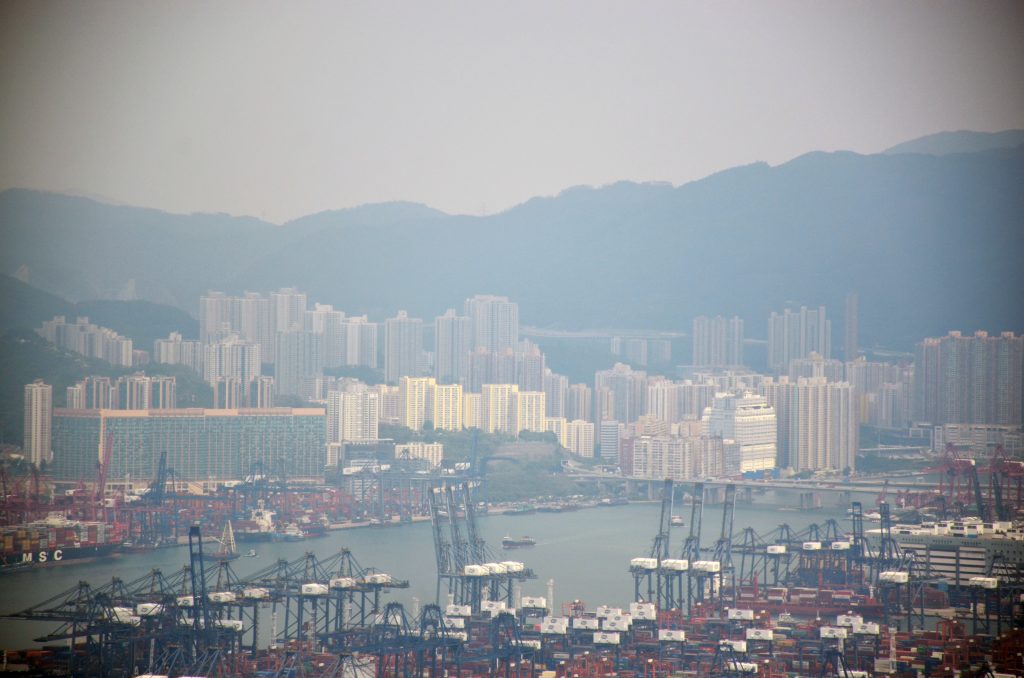
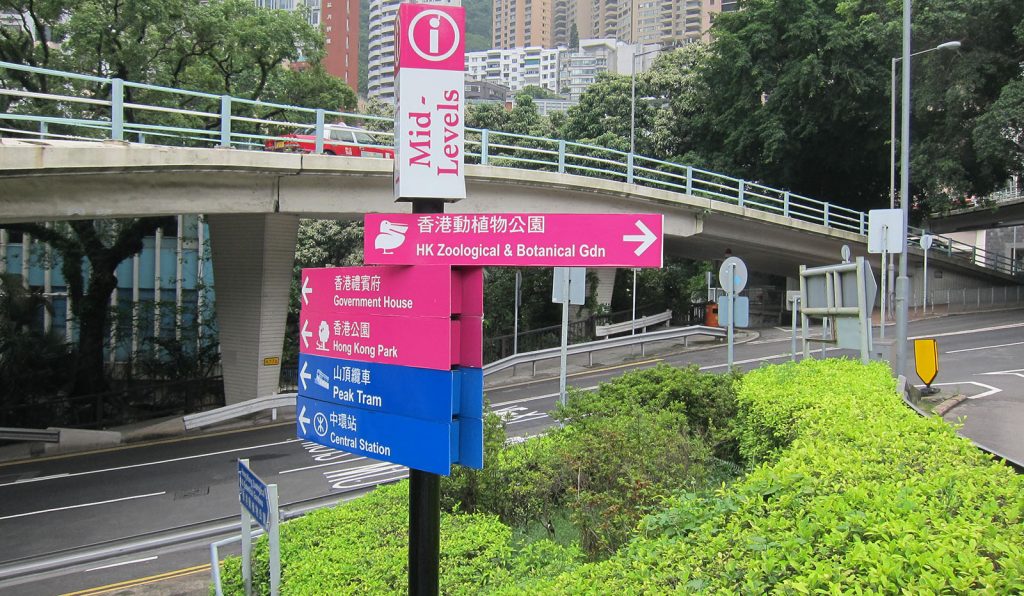
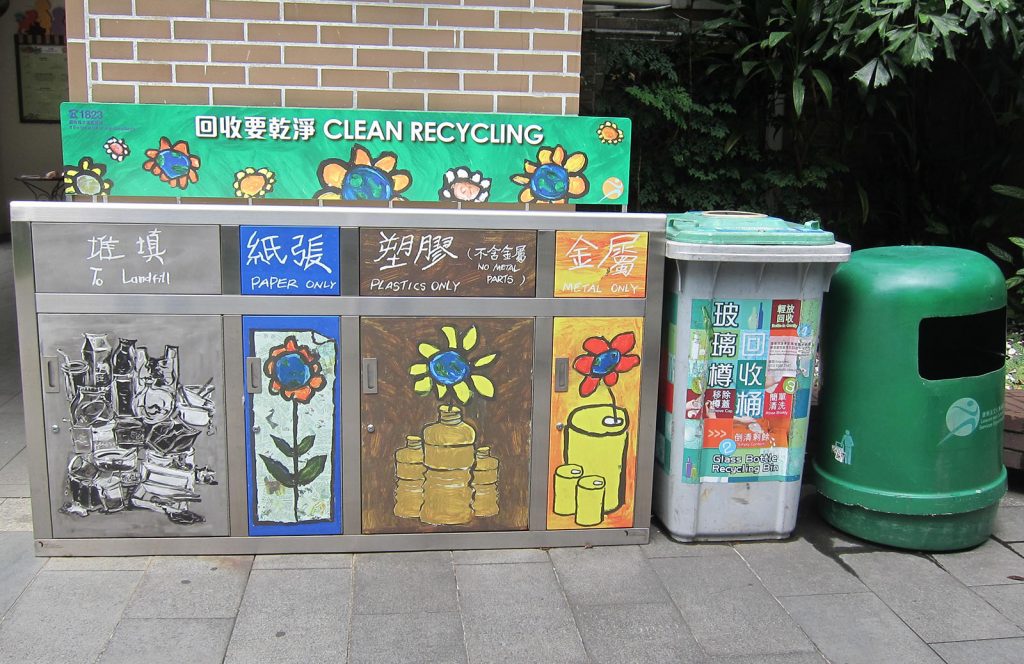
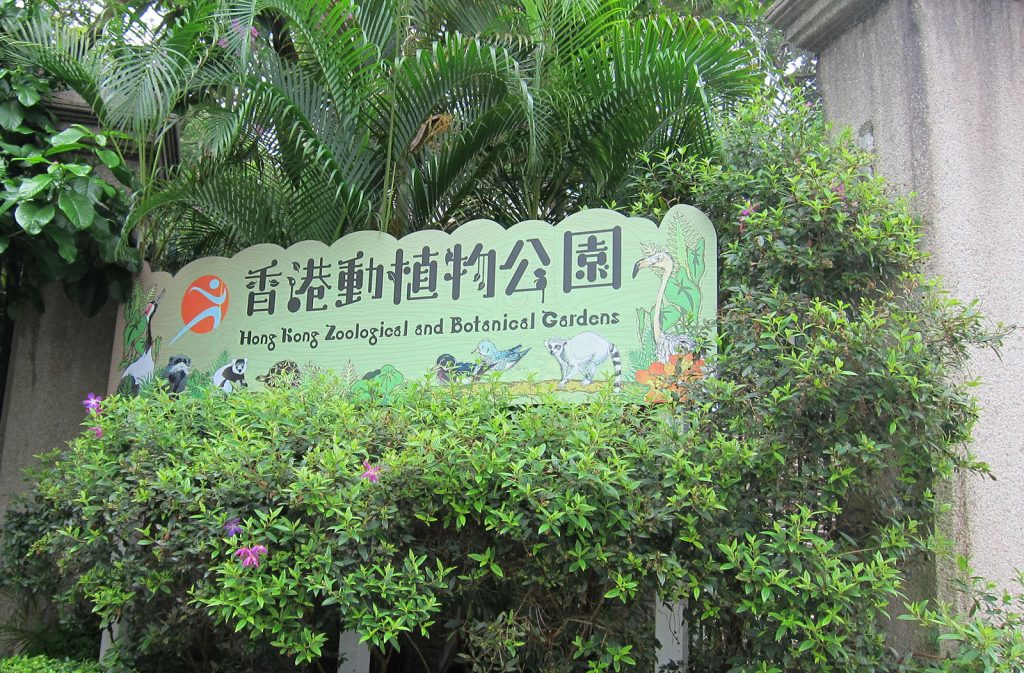
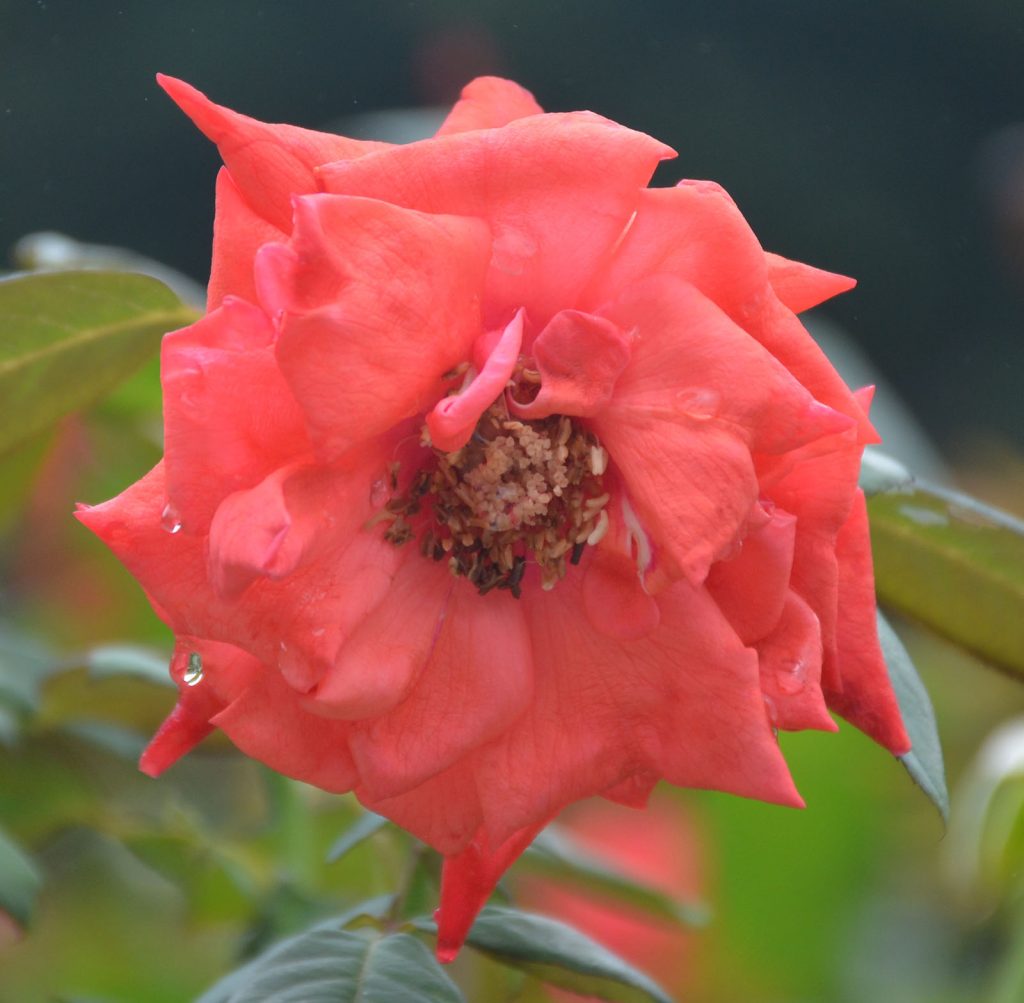
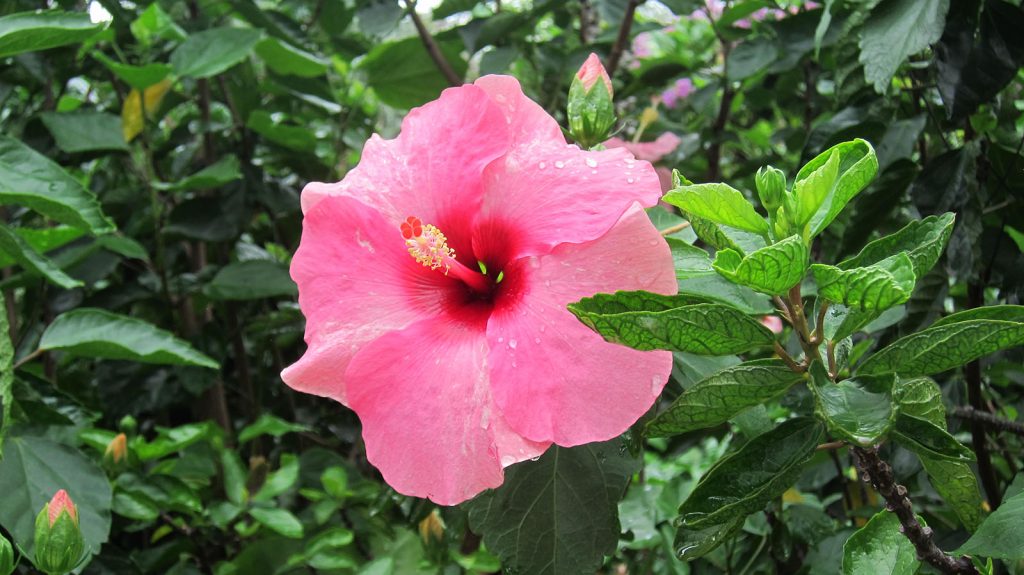
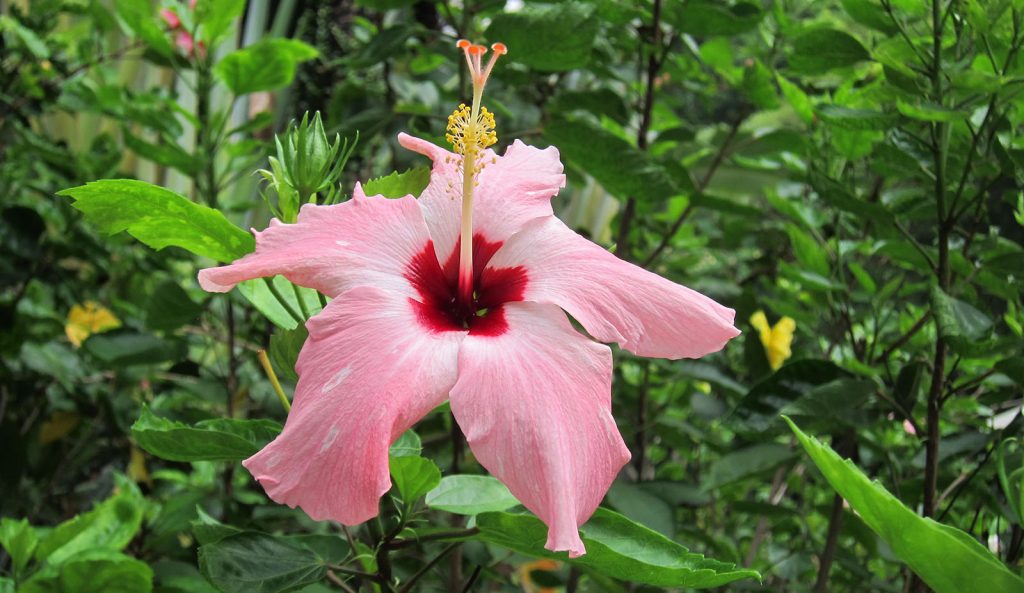
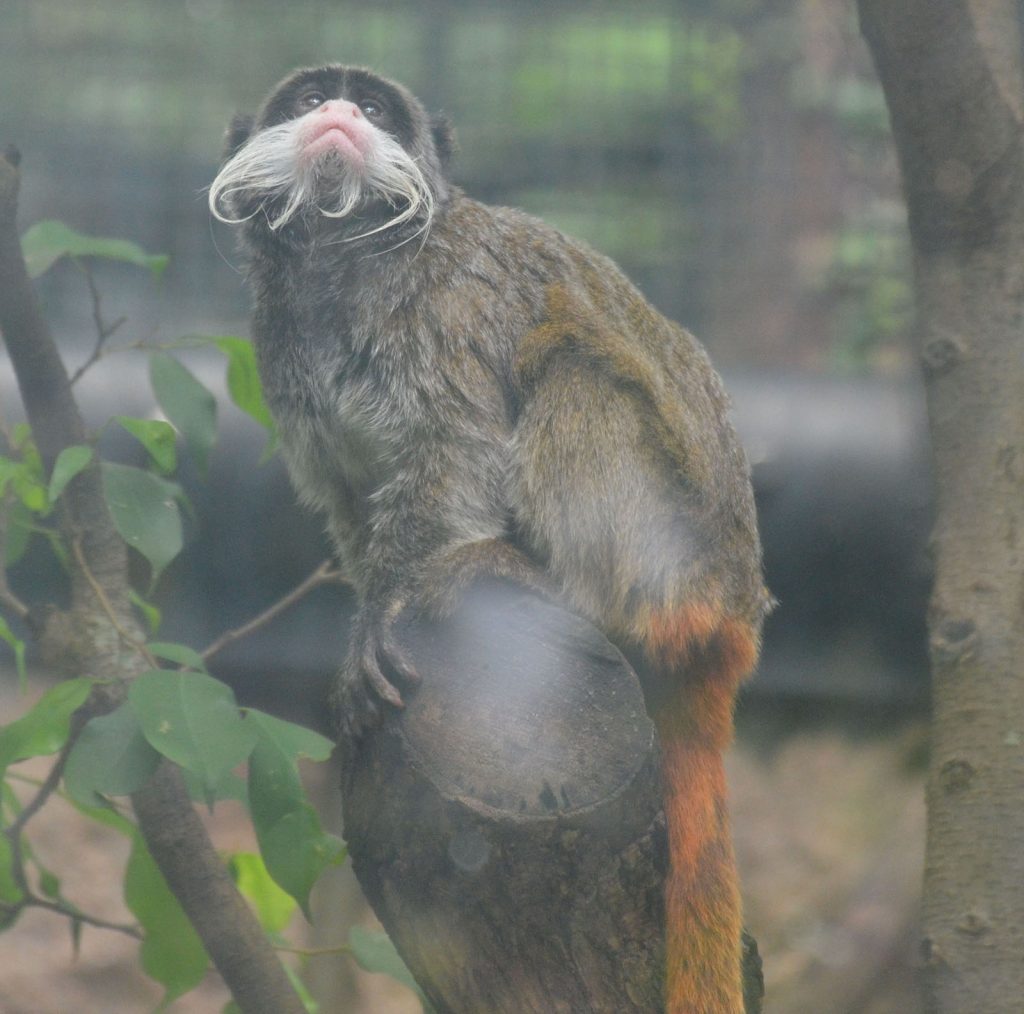
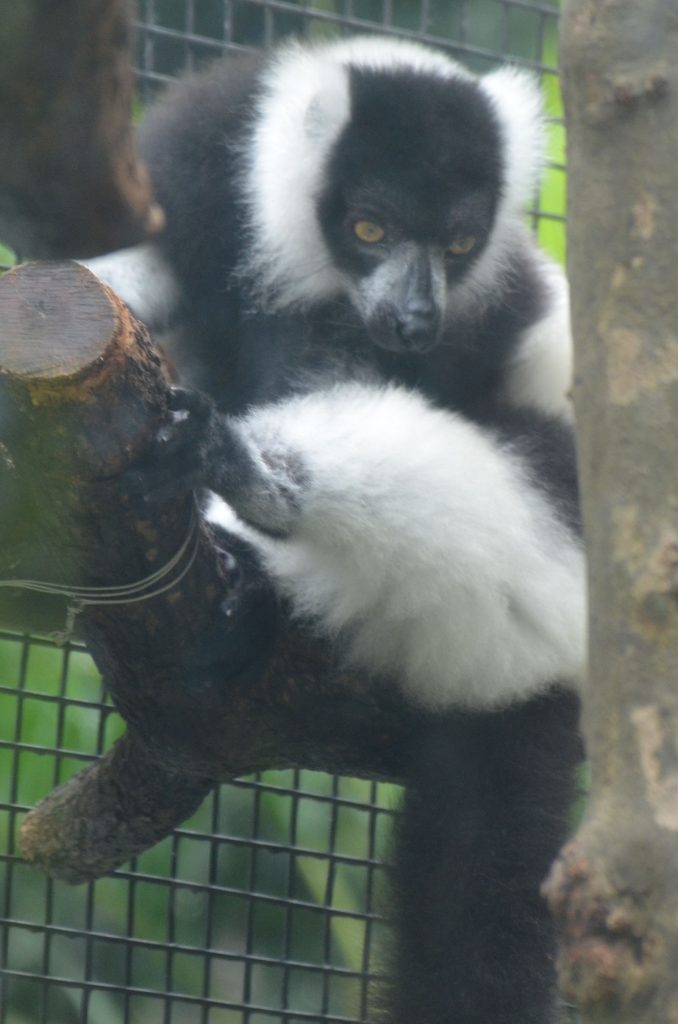
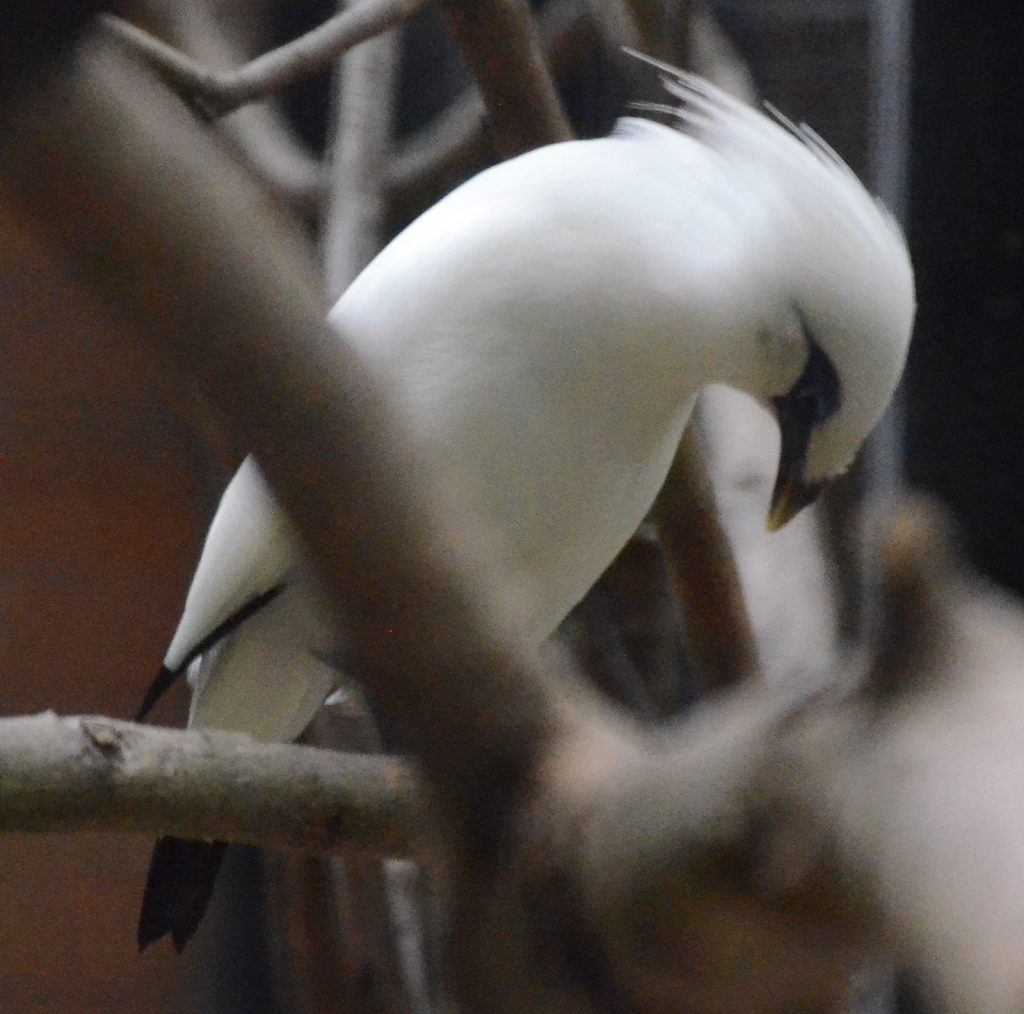
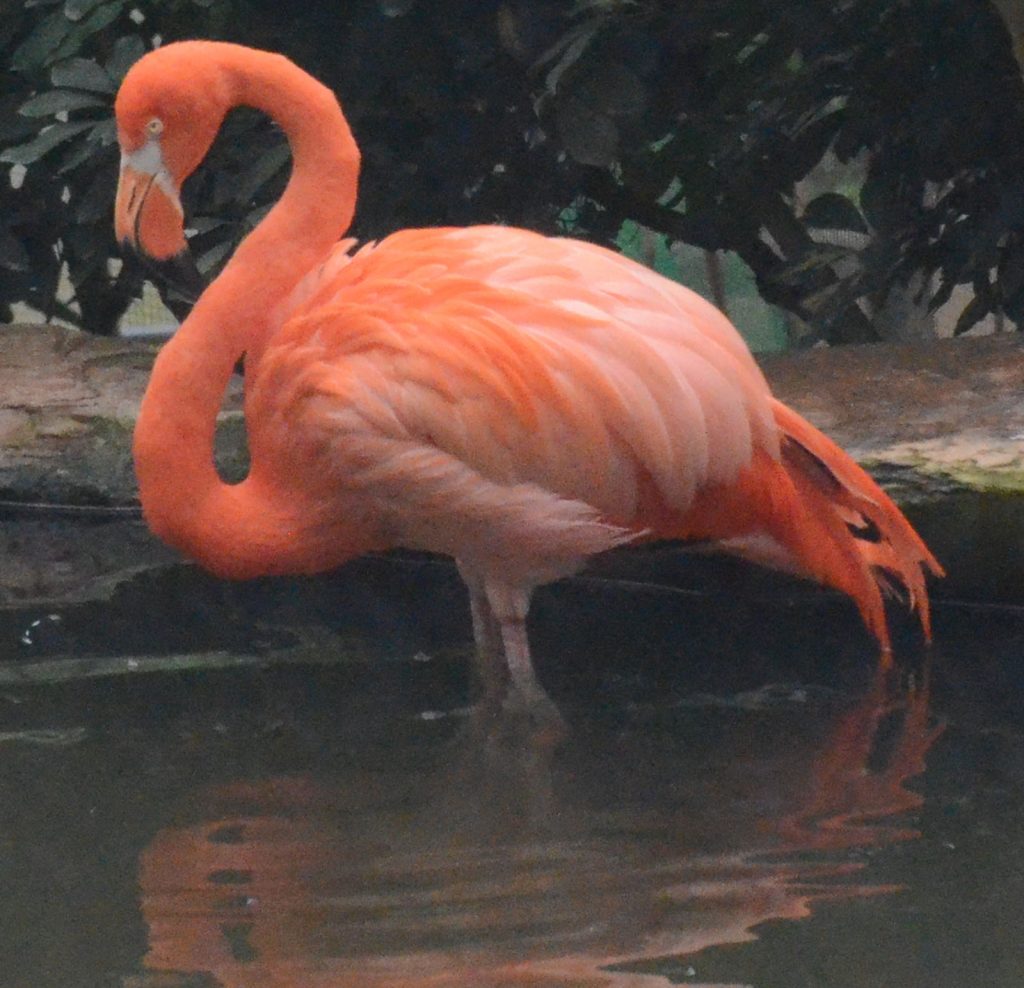
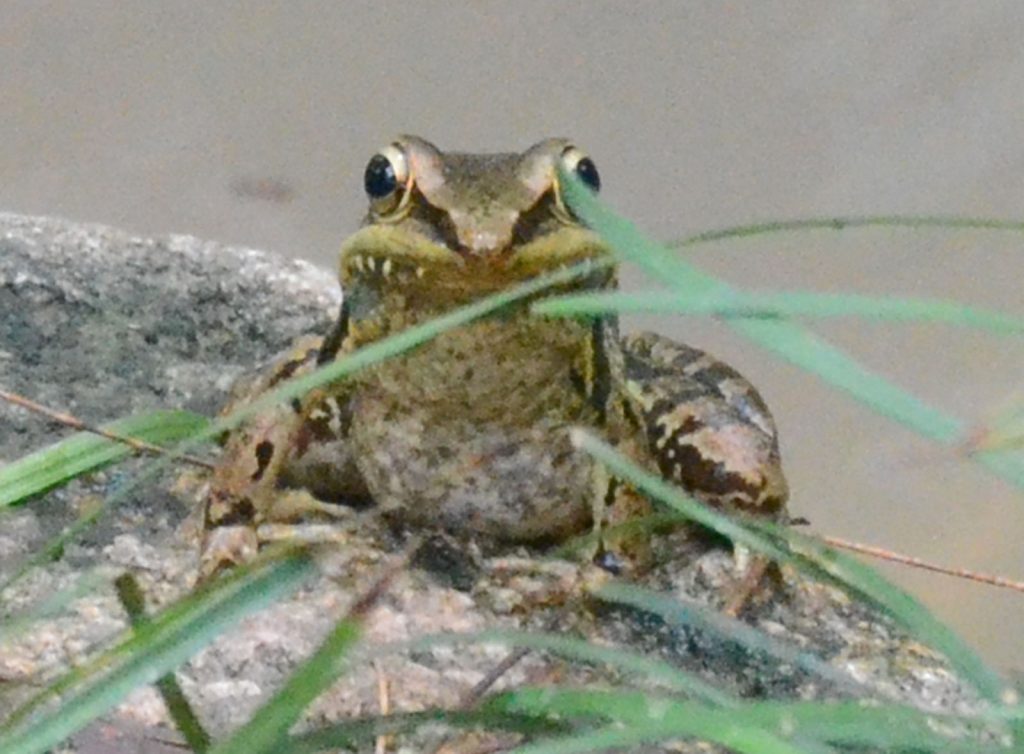
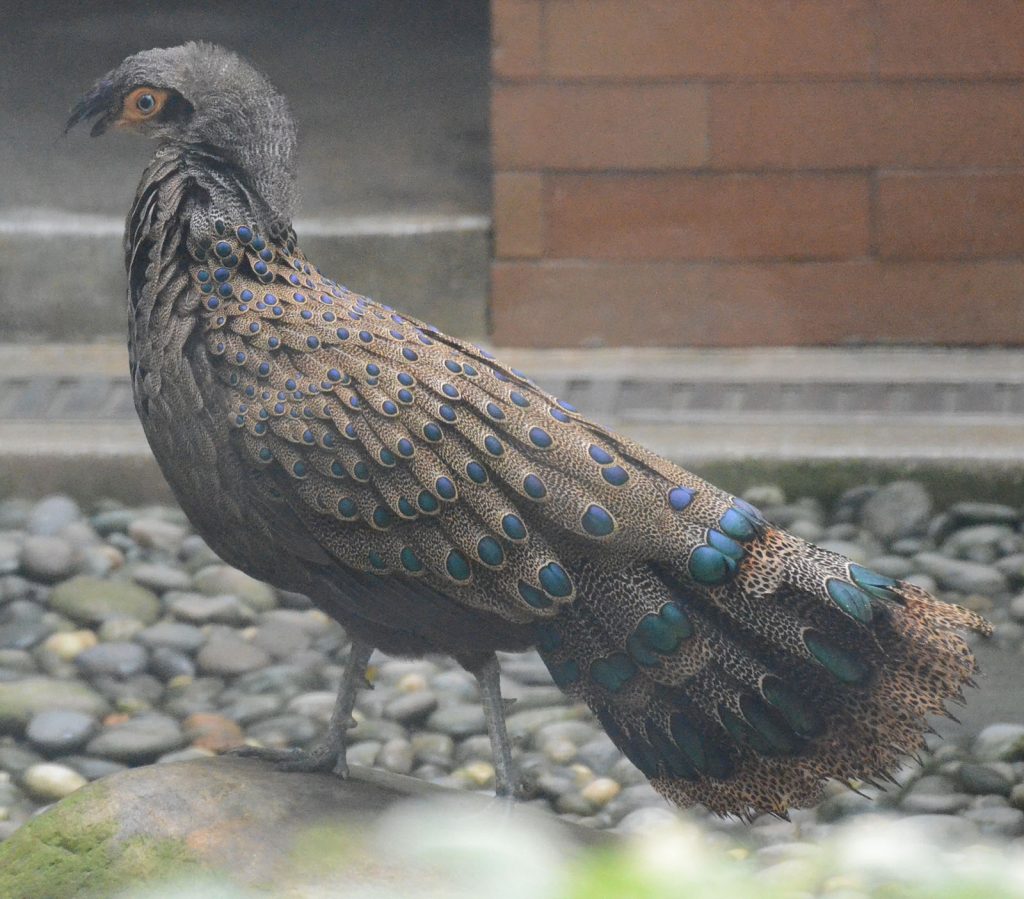


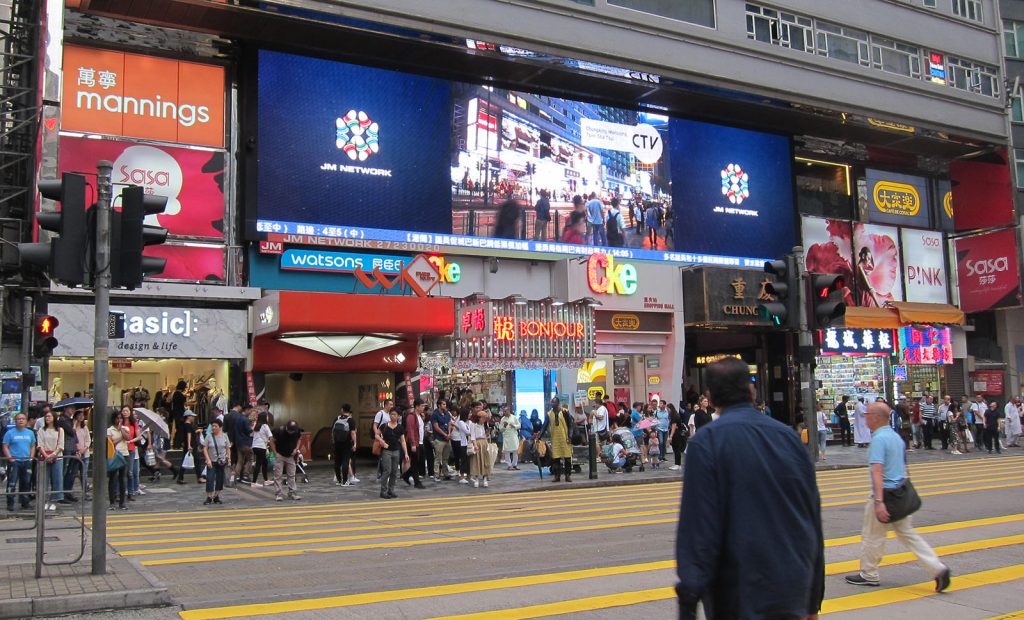
Leave a Reply